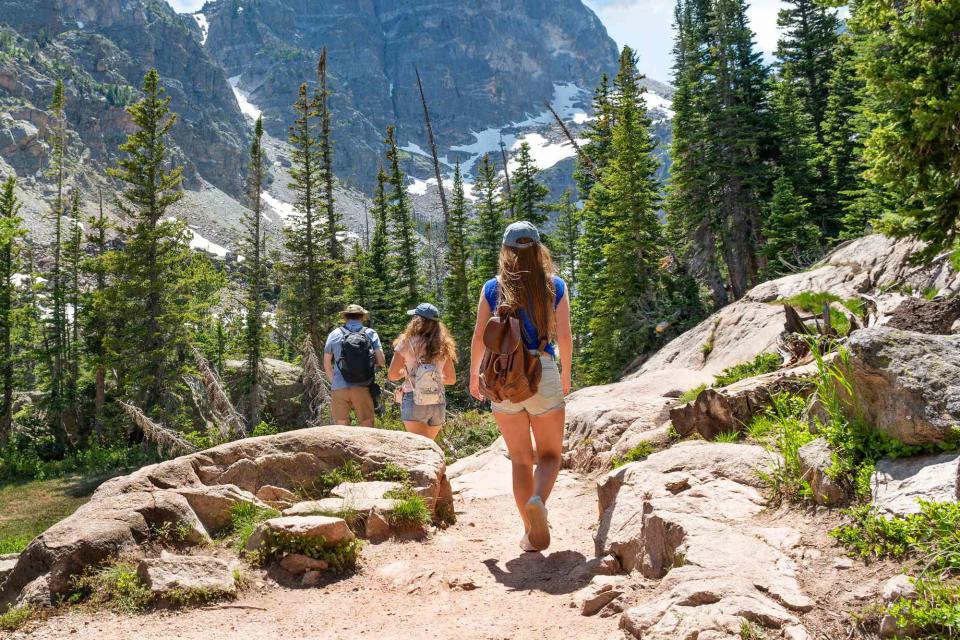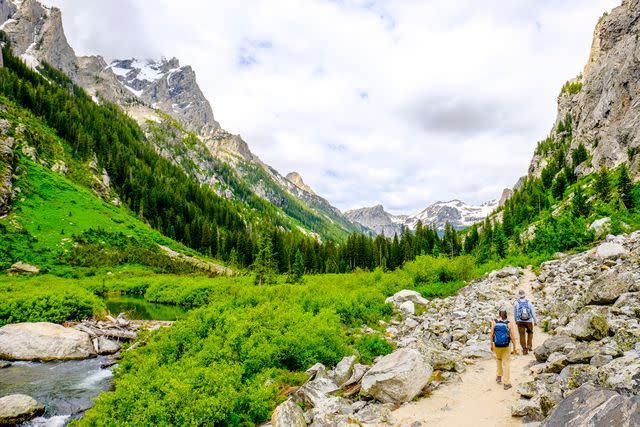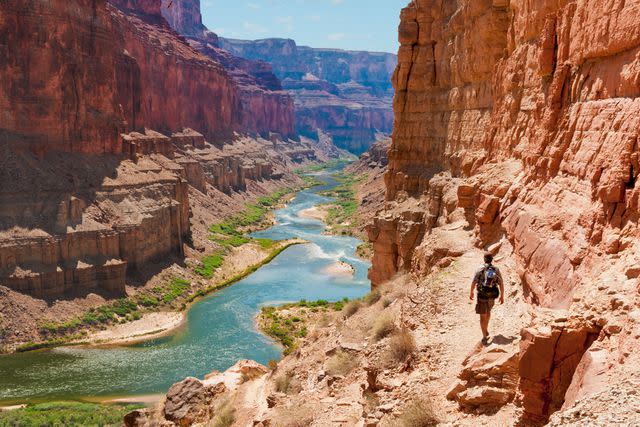Here's How People Are Getting Lost in National Parks — and What They Do to Survive, According to a New Study
Most hikers get lost by wandering off the trail, the study said

Getty
A stock image of hikers in ColoradoHow people get lost in national parks, and what they do to survive when they do, is the subject of a new study.
Released by SmokyMountains.com, a website that offers general hiking tips and camping guides, the study observed more than 100 successful rescues throughout national parks in the United States and highlighted how each hiker was able to make it out alive.
According to the study, most hikers got lost by wandering off the trail (41%), while others got lost due to bad weather (17%), falling off the trail (16%), getting separated from the group (8%), suffering an injury (7%), darkness (6%) and loss or failure of equipment (5%). 1%, meanwhile, were lost for "other reasons," per the study.
Once lost, hikers then survived based on four factors: warmth, shelter, water and food, the study said.
Never miss a story — sign up for PEOPLE's free daily newsletter to stay up-to-date on the best of what PEOPLE has to offer, from celebrity news to compelling human interest stories.

Getty
A stock image of hikers in a national parkRelated: Hiker Survives Falling Off Mountain by Clinging to a Small Tree in ‘Treacherous’ Weather
According to the study, the most mentioned sources of warmth included clothes (12%), fire (10%), camping gear (10%), body heat of fellow hikers, including dogs (5%), covering themselves (4%), exercise (4%) and digging in (3%).
As for shelter, the most common types included camping gear (11%), discovered caves and shelters (9%), under trees (8%), self-made caves and shelters (8%), in the rocks (7%), inside fallen trees (4%) and in the ground (3%).
Water, the study said, was an important factor for hikers to stay alive while lost, and the most commonly found water sources included bodies of water (24%), snow, rain or puddles (16%), rationed own water (13%), their own urine (6%) and the licking of leaves, moss and grass (2%). 9%, meanwhile, had no water, per the study.
In terms of food, the study noted that the most common sources of food included rationed own supplies (35%), berries and fruit (9%), plants (9%), insects (3%) and foraging and hunting (3%). A large percentage of hikers (17%) did not have food, per the study.

Getty
A stock image of a hiker in a national parkRelated: Hiker Survived Frigid Night After Falling Down Mountain By Clinging to Tree
The study also highlighted whether hikers moved or stayed put when they became lost, with 65% of people reported to have kept moving, while another 35% reported having stayed put.
Looking at how hikers got back to safety, the study said 77% of people were rescued, while 23% found a way out.
The SmokyMountains.com study also collected information on what hikers should do if they ever become lost on a trail and created a list of tips to help them prepare before their journeys.
What to do to avoid getting lost, as well as tips tied to warmth, shelter, water and food were also provided by the study,
For more People news, make sure to sign up for our newsletter!
Read the original article on People.

